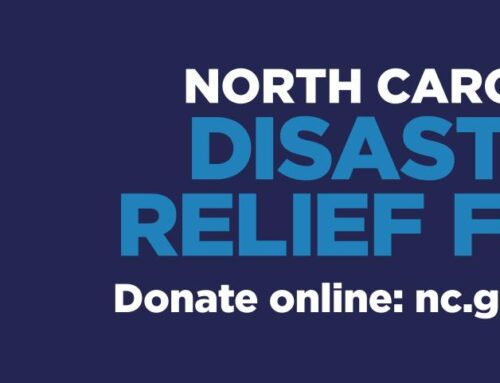
The COVID-19 pandemic has brought plenty of obstacles to the nonprofit sector. In some ways, however, we did see growth. Charitable giving increased from a record high of $471.44 billion in donations made in the United States by individuals, bequests, foundations, and corporations (Giving USA 2021: The Annual Report on Philanthropy for the Year 2020) to the formal and informal mutual aid groups that formed.
However, all funding is not equal. I’m a fundraising coach and consultant, and I’ve seen many organizations receive grant funding in the past two years specifically for Covid-19 relief. These were funds restricted for staying afloat during a global pandemic.The grantee may have been able to use the funds for payroll, to cover programmatic losses, and other overhead costs, but once the pandemic was considered “over,” the funder did not renew the grant. Restricted giving has soared in the past decade. We live in a current age of information, and a one-size-fits-all approach does not work. Donors expect choices and something that aligns with their individual niches. This leads to designated (restricted) funds that are set up to appeal to a donor’s personal interests more than what the organization truly needs.
This intense personalization of giving has been detrimental to philanthropy. As fundraisers, we should still build relationships with donors. However, the practice of giving and receiving restricted funding neglects the critical need for trust between funders and donors. It’s become a demonstration of power; the person with the money gets to make all the decisions. The organization receiving the donation performs any tricks needed to receive the funds. When this happens, organizations quickly lose sight of their mission, vision, and values in their chase for funding.
The solution is unrestricted funding: funds that may be used for any legal purpose appropriate to the organization.
Giving unrestricted, multi-year funding allows nonprofits to establish stability and practice resiliency.
Giving unrestricted, multiyear funding improves long-term outcomes for the community by creating stability. Through this type of support, donors can help their cause flourish by providing much-needed resources that allow nonprofit organizations to plan with confidence, invest in programs that improve lives, grow their staffs, and pay them competitively (a study found that organizations receiving unrestricted funds have higher retention rates), take risks on innovative ideas and projects without having to worry about funding falling through or being cut off unexpectedly; build stronger relationships with donors who feel heard; engage more people in the process of giving, and achieve higher levels of impact over time.
Unrestricted funding allows you to plan for the long term.
A gift that must be used for a specific project or program means your nonprofit can only use the money in that way. With unrestricted funding, you have more flexibility when deciding how to spend your budget. You can apply it where it’s most needed and help ensure that programs are sustainable over time by investing in other areas besides just one project or initiative, like training staff members or creating systems so they don’t have to come back to donors again and again for the support.
Making a real impact takes time, and giving unrestricted, multi-year funding supports longevity.
When you give unrestricted, multiyear funding to your favorite nonprofit, you help it build a stable funding base and create longevity.
Unrestricted, multi-year funding allows nonprofits to take risks and try new things. The best way to measure the impact of a donor-supported program is by its effectiveness over time. Longer-term strategies are also more sustainable and impactful. Your nonprofit may have ambitious plans for its future but needs the financial support to make them happen—and that’s where you come in! Unrestricted giving gives nonprofits the flexibility they need (and deserve) to invest in their future success and create lasting change.
Giving unrestricted, multi-year funding supports innovation.
Unrestricted funding is a multiyear, flexible source of support that allows nonprofits to take risks, experiment, and learn from mistakes. It allows you to focus on long-term impact rather than short-term performance. Giving unrestricted, multi-year funding supports innovation.
Unrestricted funding is an essential part of any organization’s fundraising toolkit. It’s often confused with “discretionary giving” or “designated giving.” Still, those terms describe two very different things: Discretionary Giving: Donors give money directly to a specific project or program they want their gift used for (and they can ask how their donation was spent). Designated Giving: Donors give money directly toward a specific cause or issue (and they can tell you where the funds should be allocated).
Giving unrestricted, multi-year funding helps build relationships rooted in trust.
You can’t build trust in a one-year relationship; it takes time and experience. Trust is built over time through shared experiences that help donors see your organization’s mission and values firsthand.
Unrestricted, multi-year funding allows your donors to have more confidence in the organization they are supporting because it allows them to see where their funds are being used and how their support impacts the community long-term.
Embedding unrestricted, multi-year funding as a standard practice across all philanthropy can transform the nonprofit sector and create enduring positive change. MacKenzie Scott recognizes this and has been giving this way for a few years, she says, “Because we believe that teams with experience on the front line of challenges will know best how to put the money to good use, we encouraged them to spend it however they choose.”
Giving unrestricted, multi-year funding helps make transformational change.
If you’re trying to secure unrestricted funding from your donors, it’s important to understand why this approach is so transformative. Unrestricted funds allow nonprofits to take risks and innovate, which is necessary for long-term growth and success. A donor who makes an unrestricted gift trusts that their gift will be spent responsibly and applied with the most intention by the organization and/or community experts. This breeds trust and stronger relationships over time.
Unrestricted funding can also help you plan for the future by enabling you to think big while being realistic about what your organization needs now (and how much of an impact it can have). Finally, donors who give unrestricted gifts are more likely than those who don’t support such giving models because they feel like they are making a bigger difference in the world through their philanthropic efforts. They tackle big issues and root causes rather than throwing money at one-off problems.
By focusing on the benefits of unrestricted funding, communicating with donors should be relatively easy. There will be objectors. Many may think their money will be wasted, used inefficiently, or afraid of losing control. The solution is simple: they are not your donor. If they feel you are not effective enough to use their donation well, they do not need to give their funding to you. There is no shortage of donors; YOU do not have to mold yourself to fit their desires. Your role is to stay true to your mission, vision, and values. Stepping away from the power struggle game may be hard at first, but eventually, you find relationships that are mutually beneficial and rooted in trust. As Scott put it, “I needn’t ask those I care about what to say to them, or what to do for them. I can share what I have with them to stand behind them as they speak and act for themselves.”
Setting unrestricted, multi-year funding as the standard practice across philanthropy is the way forward. I have seen it work in the organizations with whom I interact. It’s time to change how we think about giving and create an enduring impact on communities that lasts for generations.
Amie Bossi has worked in the nonprofit sector for over a decade and a half, working with numerous local,regional, and national organizations. She spent most of her time working in small to mid-sized development departments, even building from scratch an entire development program for an organization that although over 140 years old, was brand new to the fundraising world.






